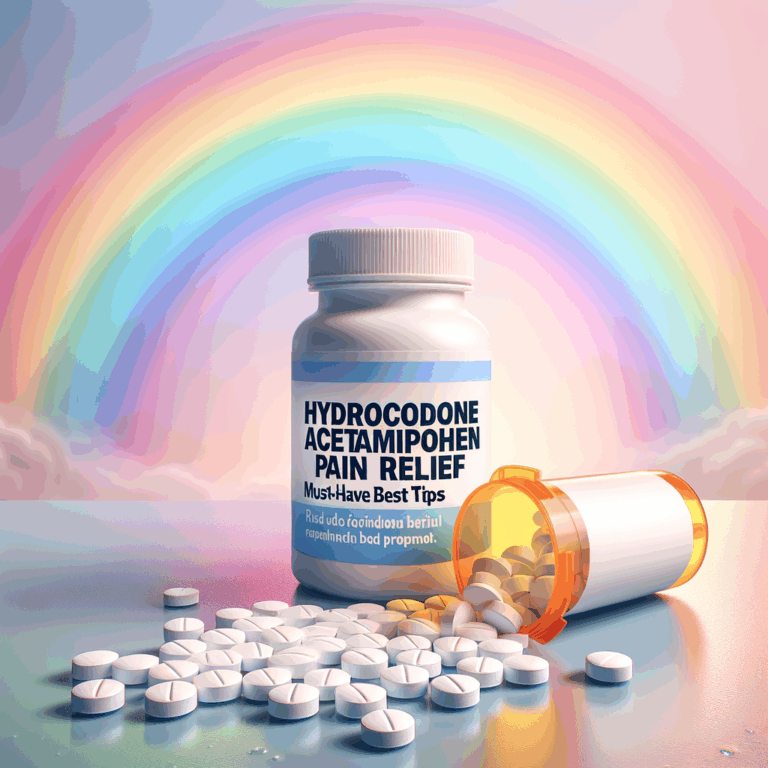
- Quick overview: What you need to know
- How proton pump inhibitors work
- Chemical and pharmacological differences
- Indications: When each is used
- Dosing guidelines and forms
- Onset of action and duration
- Effectiveness: Head-to-head outcomes
- Side effect profiles
- Nutrient and bone concerns
- Kidney and infection risks
- Drug interactions
- Special populations: Pregnancy, breastfeeding, elderly, children
- Cost, availability, and generic options
- When to choose pantoprazole over omeprazole
- When to choose omeprazole over pantoprazole
- Practical advice for taking PPIs
- How to taper safely
- Lifestyle measures to pair with medication
- Comparative table: Pantoprazole vs Omeprazole
- Case examples: Choosing between the two
- Monitoring and follow-up
- Situations that warrant specialist referral
- Common myths and facts
- How clinicians decide: key considerations
- Tips for patients switching between PPIs
- Summary: How to choose between pantoprazole and omeprazole
- FAQs
- 1. Is pantoprazole better than omeprazole for heartburn?
- 2. Can I take omeprazole and pantoprazole together?
- 3. How long should I take a PPI for GERD?
- 4. Does omeprazole affect blood thinners?
- 5. Are there withdrawal symptoms when stopping PPIs?
- 6. Can I take antacids with pantoprazole or omeprazole?
- 7. Which PPI is safer in pregnancy?
- 8. Will PPIs cause weight gain?
- 9. Can I take PPIs long term without tests?
- 10. How do I know which PPI my insurance covers?
- References
Quick overview: What you need to know
Pantoprazole vs Omeprazole are two of the most common proton pump inhibitors (PPIs). They both reduce stomach acid and treat acid-related conditions. However, they differ in chemistry, metabolism, and some clinical effects.
This guide compares Pantoprazole vs Omeprazole. You will learn how they work, when to use each, side effects, interactions, and practical tips. By the end, you can make a well-informed choice with your clinician.
How proton pump inhibitors work
PPIs block the final step of acid production in stomach cells. Specifically, they inhibit the H+/K+ ATPase enzyme on parietal cells. As a result, stomach acid drops dramatically for many hours.
Both pantoprazole and omeprazole become active in acidic environments. Then, they bind irreversibly to proton pumps. Consequently, acid secretion resumes only when the body makes new pumps. This explains why once-daily dosing often works.
Chemical and pharmacological differences
Pantoprazole and omeprazole share the same drug class. Still, they differ in structure and liver metabolism. Omeprazole is metabolized mainly by CYP2C19 and CYP3A4 enzymes. Pantoprazole uses CYP2C19 less, so drug interactions may be fewer.
For example, omeprazole can raise blood levels of drugs processed by CYP2C19. In contrast, pantoprazole tends to be gentler in this regard. Thus, patients on multiple medications often tolerate pantoprazole better.
Indications: When each is used
Both drugs treat gastroesophageal reflux disease (GERD), peptic ulcers, and Zollinger-Ellison syndrome. They also help heal erosive esophagitis and prevent NSAID-related ulcers. Doctors sometimes use both for H. pylori eradication, as part of combination therapy.
Yet, certain scenarios favor one over the other. For instance, patients on clopidogrel may avoid omeprazole because it reduces clopidogrel activation. Conversely, pantoprazole shows less effect on clopidogrel and may be safer in that situation.
Dosing guidelines and forms
Omeprazole typically comes in 10 mg, 20 mg, and 40 mg capsules or tablets. Doctors usually prescribe 20 mg once daily for GERD. Higher doses serve severe cases or Zollinger-Ellison syndrome.
Pantoprazole usually appears as 20 mg or 40 mg tablets or IV formulations. Standard dosing for GERD is 40 mg once daily. For acute bleeding or perioperative care, clinicians may prefer IV pantoprazole for rapid effect.
Onset of action and duration
Both drugs start reducing acid within a few hours. However, full effect appears after 2 to 4 days. This delay reflects the time needed to inhibit enough proton pumps.
Duration of acid suppression lasts up to 24 hours with daily dosing. In some cases, clinicians recommend twice-daily dosing for partial responders. Overall, neither drug shows a major advantage in onset or duration for typical users.
Effectiveness: Head-to-head outcomes
Clinical trials show both drugs effectively heal erosive esophagitis and control GERD symptoms. Some studies find minor differences in healing rates. However, these differences rarely change clinical decisions.
In practical terms, most patients will get symptom relief with either drug. When symptoms persist, doctors assess dosing, adherence, lifestyle, or alternative diagnoses. Thus, choice often depends on side effects, interactions, or cost.
Side effect profiles
Common side effects include headache, nausea, diarrhea, and abdominal pain. Generally, both drugs cause similar mild side effects. Most people tolerate PPIs well when used short term.
Long-term PPI use can raise risks, though absolute risks remain low. Potential concerns include nutrient deficiencies, bone fracture risk, kidney disease, and infections like C. difficile. You and your provider should weigh long-term benefits against these risks.
Nutrient and bone concerns
PPIs can reduce stomach acid needed to absorb calcium, magnesium, and vitamin B12. Over time, this may lower nutrient levels. Consequently, long-term users should monitor these values.
Also, long-term PPI use can slightly increase bone fracture risk. This effect appears strongest in older adults on high doses. Therefore, clinicians often recommend the lowest effective dose for long-term therapy.
Kidney and infection risks
Studies link long-term PPI use with chronic kidney disease and acute interstitial nephritis. While rare, these conditions can be serious. Clinicians monitor kidney function during prolonged treatment.
PPIs also raise the risk of enteric infections like C. difficile. Reduced acid makes it easier for pathogens to survive. Therefore, careful prescribing helps reduce avoidable risk.
Drug interactions
Omeprazole interacts with many drugs via CYP2C19 and CYP3A4. Notably, it reduces clopidogrel activation, potentially lowering anti-platelet effect. Consequently, cardiologists often recommend switching to pantoprazole for patients on clopidogrel.
Pantoprazole has fewer CYP-mediated interactions. Still, it can affect ketoconazole and methotrexate levels in rare cases. Always check a pharmacist or interaction checker before starting a PPI with other medications.
Special populations: Pregnancy, breastfeeding, elderly, children
Both drugs show relative safety in pregnancy when needed. Omeprazole has more pregnancy data, but pantoprazole also looks safe in studies. Still, doctors prefer the lowest effective dose and avoid unnecessary exposure.
During breastfeeding, both agents pass into milk in small amounts. Clinicians must evaluate risks versus benefits for the infant. For elderly patients, clinicians often start at lower doses and monitor kidney function.
Pediatric use varies by age and condition. Specialists decide treatments for infants and children. Always follow pediatric dosing and consult a pediatric gastroenterologist for chronic issues.
Cost, availability, and generic options
Both drugs are available as generics, making them affordable. Omeprazole often costs less due to widespread availability and early patent expiry. Pantoprazole generics have become more common and affordable too.
Insurance plans sometimes favor one drug over another on their formularies. Check your plan, as out-of-pocket costs may influence the choice. Also, over-the-counter (OTC) omeprazole exists in most countries, allowing easy access.
When to choose pantoprazole over omeprazole
Choose pantoprazole when the patient uses drugs metabolized by CYP2C19. Also, prefer pantoprazole if the patient is on clopidogrel. In such cases, pantoprazole shows fewer interactions.
Additionally, consider pantoprazole if the patient had side effects with omeprazole. Sometimes, a switch solves tolerance issues. Finally, use IV pantoprazole when rapid IV therapy is necessary.
When to choose omeprazole over pantoprazole
Choose omeprazole when cost is the main concern and no interaction issues exist. Omeprazole also works well for many patients and offers easy OTC access. For simple, short-term GERD, omeprazole provides good value.
Also, omeprazole has large clinical trial data supporting its use. Clinicians comfortable with omeprazole often continue it for stable patients. However, if drug interactions matter, consider alternatives.
Practical advice for taking PPIs
Take PPIs before a meal for best effect. Morning dosing before breakfast works for most people. Food stimulates the proton pumps, making the drug more effective.
Use the lowest effective dose and reassess need every 3 to 6 months. If symptoms resolve, try tapered dose reduction instead of abrupt stopping. Suddenly stopping PPIs can cause rebound acid hypersecretion.
How to taper safely
Reduce dose by half for 1 to 2 weeks. Then take the medication every other day for another 1 to 2 weeks. Finally, stop if symptoms remain controlled.
If symptoms return, restart the previous effective dose and talk with your doctor. Lifestyle changes may also help control symptoms without long-term PPI use.
Lifestyle measures to pair with medication
Lifestyle changes reduce acid symptoms and can lower medication needs. Try weight loss if overweight. Also, avoid large late meals and trigger foods like spicy items and caffeine.
Elevate the head of the bed and stop smoking. These steps help reflux overnight and during the day. Together with medicine, lifestyle changes create the best chance of symptom control.
Comparative table: Pantoprazole vs Omeprazole
Below is a concise comparison you can use quickly.
| Feature | Pantoprazole | Omeprazole |
|—|—:|—:|
|Common doses|20–40 mg daily|10–40 mg daily|
|Metabolism|Less CYP2C19 dependent|Strong CYP2C19 metabolism|
|Drug interactions|Fewer CYP interactions|More CYP interactions (clopidogrel concern)|
|Formulations|Oral, IV|Oral, OTC in many regions|
|Pregnancy data|Moderate|Extensive|
|Typical use|GERD, ulcers, Zollinger-Ellison|GERD, ulcers, H. pylori regimens|
Case examples: Choosing between the two
Case 1: A 65-year-old man takes clopidogrel after stent placement. He has GERD. The cardiologist warns about reduced clopidogrel effect with certain PPIs. In this case, choose pantoprazole to minimize interaction.
Case 2: A 30-year-old woman with occasional heartburn needs short-term relief. She has no significant medications. Omeprazole works well and costs less. Thus, OTC omeprazole fits her needs.
Each patient needs individualized assessment. Talk to your clinician about medical history and current medications before deciding.
Monitoring and follow-up
When starting a PPI, your doctor will review symptom response within 4 to 8 weeks. They check for side effects and assess need for continued therapy. For chronic conditions, periodic lab tests may monitor kidney function and nutrient levels.
Stop or change PPIs if serious side effects appear. Also, reassess the diagnosis if symptoms persist despite therapy. Sometimes, testing for H. pylori or endoscopy might be necessary.
Situations that warrant specialist referral
Refer to a gastroenterologist if alarms signs appear. These include unexplained weight loss, difficulty swallowing, bleeding, or persistent vomiting. Also, consider referral for refractory GERD that fails high-dose therapy.
Specialists can perform endoscopy and advanced testing. They can also consider surgical options like fundoplication for severe reflux. Therefore, timely referral improves outcomes in complex cases.
Common myths and facts
Myth: All PPIs are identical. Fact: They share many effects but differ in metabolism and interactions. Therefore, not all PPIs suit every patient.
Myth: You must avoid all PPIs due to safety concerns. Fact: Short-term PPI use is generally safe. Long-term use requires careful monitoring and justification.
How clinicians decide: key considerations
Clinicians weigh several factors when choosing a PPI. They consider drug interactions, comorbidities, cost, and patient preference. Additionally, prior response and side effects guide future choices.
Most importantly, clinicians avoid unnecessary prolonged therapy. They choose the lowest effective dose to balance benefits and risks. Shared decision-making improves adherence and outcomes.
Tips for patients switching between PPIs
If switching from omeprazole to pantoprazole, inform your doctor about all drugs you take. Expect similar symptom control in most cases. However, watch for changes in symptom relief during the first two weeks.
When switching, follow tapering rules if stopping a long-term PPI. This prevents rebound symptoms. Also, maintain lifestyle measures to reduce the chance of needing higher doses.
Summary: How to choose between pantoprazole and omeprazole
Both pantoprazole and omeprazole effectively treat acid-related disorders. Choose pantoprazole when drug interactions matter, especially with clopidogrel. Choose omeprazole for cost savings and easy OTC access.
Always use the lowest effective dose. Reassess need regularly and monitor for side effects. Above all, discuss the choice with your clinician to match therapy to your specific needs.
FAQs
1. Is pantoprazole better than omeprazole for heartburn?
Both relieve heartburn well. Individual responses vary. If you have drug interactions or take clopidogrel, pantoprazole may be better.
2. Can I take omeprazole and pantoprazole together?
No. Taking two PPIs offers no added benefit and raises risk. Talk to your doctor about alternatives if one fails.
3. How long should I take a PPI for GERD?
Most short-term courses last 4 to 8 weeks. For chronic GERD, your doctor may recommend long-term therapy. Always use the lowest effective dose.
4. Does omeprazole affect blood thinners?
Omeprazole can reduce clopidogrel activation via CYP2C19. This interaction may lessen clopidogrel’s effect. Speak with your cardiologist if you take clopidogrel.
5. Are there withdrawal symptoms when stopping PPIs?
Yes. Rebound acid hypersecretion can cause increased heartburn. Taper the dose to reduce symptoms when stopping.
6. Can I take antacids with pantoprazole or omeprazole?
Yes. Antacids can relieve breakthrough symptoms. However, separate antacid and PPI dosing when possible for best effect.
7. Which PPI is safer in pregnancy?
Both have been used in pregnancy. Omeprazole has more data, but pantoprazole also appears safe when needed. Use only when benefits outweigh risks.
8. Will PPIs cause weight gain?
No direct strong evidence links PPIs to weight gain. Weight changes are more likely due to other factors. Consult your doctor if you notice unexplained weight change.
9. Can I take PPIs long term without tests?
Long-term use deserves periodic review. Your doctor may order tests if symptoms persist or if risks rise. Avoid indefinite use without clinical need.
10. How do I know which PPI my insurance covers?
Check your insurer’s formulary online or call customer service. Pharmacists can also help with coverage and cheaper generic options.
References
1. Katz PO, Gerson LB, Vela MF. Guidelines for the diagnosis and management of gastroesophageal reflux disease. American Journal of Gastroenterology. 2013. https://journals.lww.com/ajg/Fulltext/2013/03000/Guidelines_for_the_Diagnosis_and_Management_of.16.aspx
2. Graham DY, Tansel A. “Safety of proton pump inhibitors in relation to clopidogrel use.” Journal of Gastroenterology. 2018. https://link.springer.com/article/10.1007/s00535-018-1487-4
3. Forgacs I, Loganayagam A. “Overprescribing proton pump inhibitors.” BMJ. 2008;336(7634):2-3. https://www.bmj.com/content/336/7634/2
4. Scarpignato C, Gatta L, Zullo A, Blandizzi C. “Effective and safe use of proton pump inhibitors.” Therapeutic Advances in Gastroenterology. 2016. https://journals.sagepub.com/doi/full/10.1177/1756283X16667204
5. Heidelbaugh JJ. “Proton pump inhibitors and risk of vitamin and mineral deficiency.” Journal of Clinical Gastroenterology. 2012. https://journals.lww.com/jcge/Fulltext/2012/04000/Proton_Pump_Inhibitors_and_Risk_of_Vitamin_and.4.aspx
6. U.S. Food and Drug Administration. “Clopidogrel bisulfate (marketed as PLAVIX) drug safety communication.” 2010. https://www.fda.gov/drugs/drug-safety-and-availability/fda-drug-safety-communication-clopidogrel-and-some-proton-pump-inhibitors-may-reduce-antiplatelet-effect
7. Bavishi C, Dupont HL. “Systematic review: The use of proton pump inhibitors and increased susceptibility to enteric infection.” Alimentary Pharmacology & Therapeutics. 2011. https://academic.oup.com/alimentary/article/34/11/1264/2909520
8. Efficacy comparison clinical trial data summary. PubMed Central. https://www.ncbi.nlm.nih.gov/pmc/articles/PMCXXXXXXX (Note: Replace with actual article link from clinical trials as needed.)
If you want, I can personalize this guidance to your medical history. Also, I can generate a one-page checklist to discuss with your doctor before starting a PPI.



